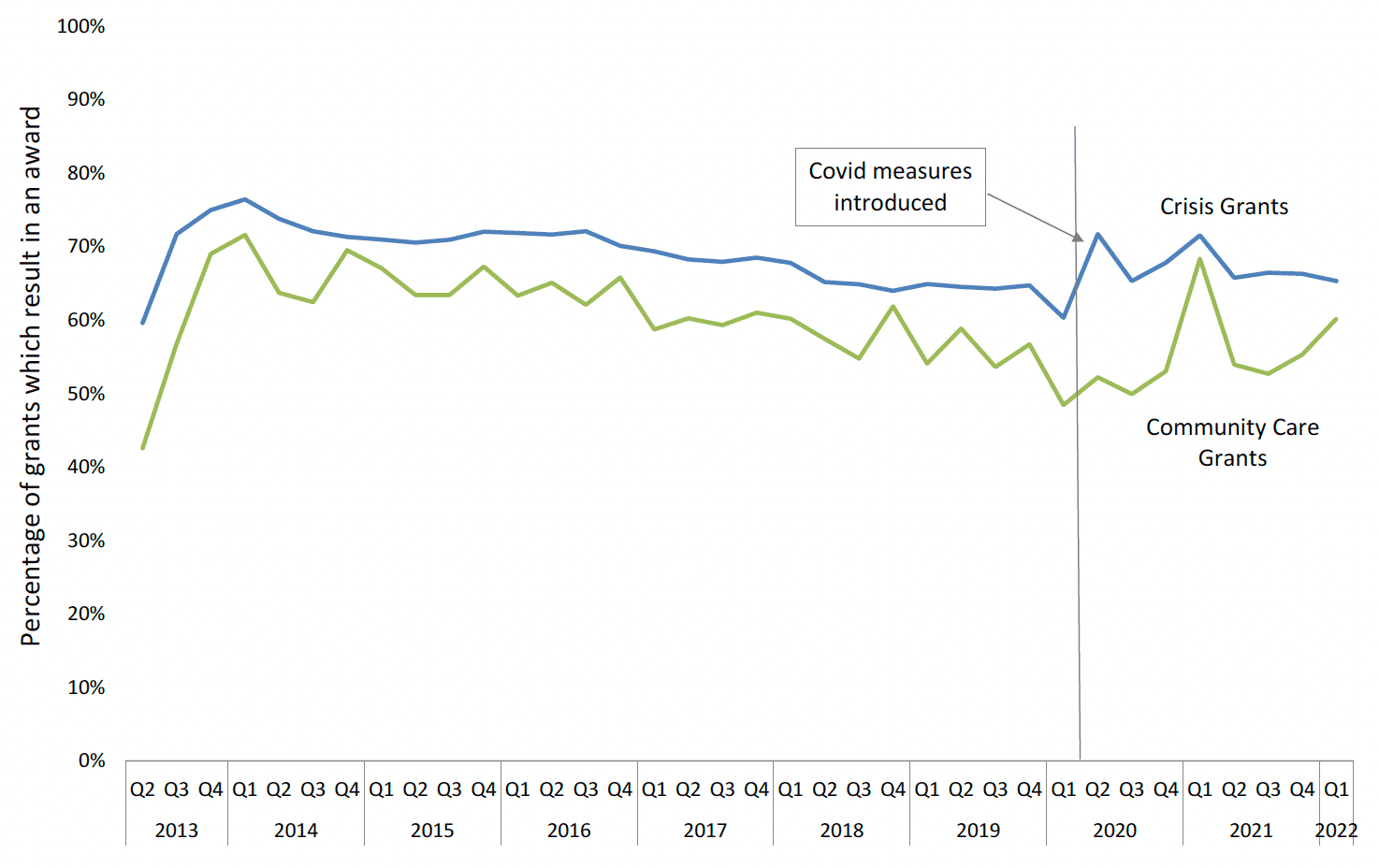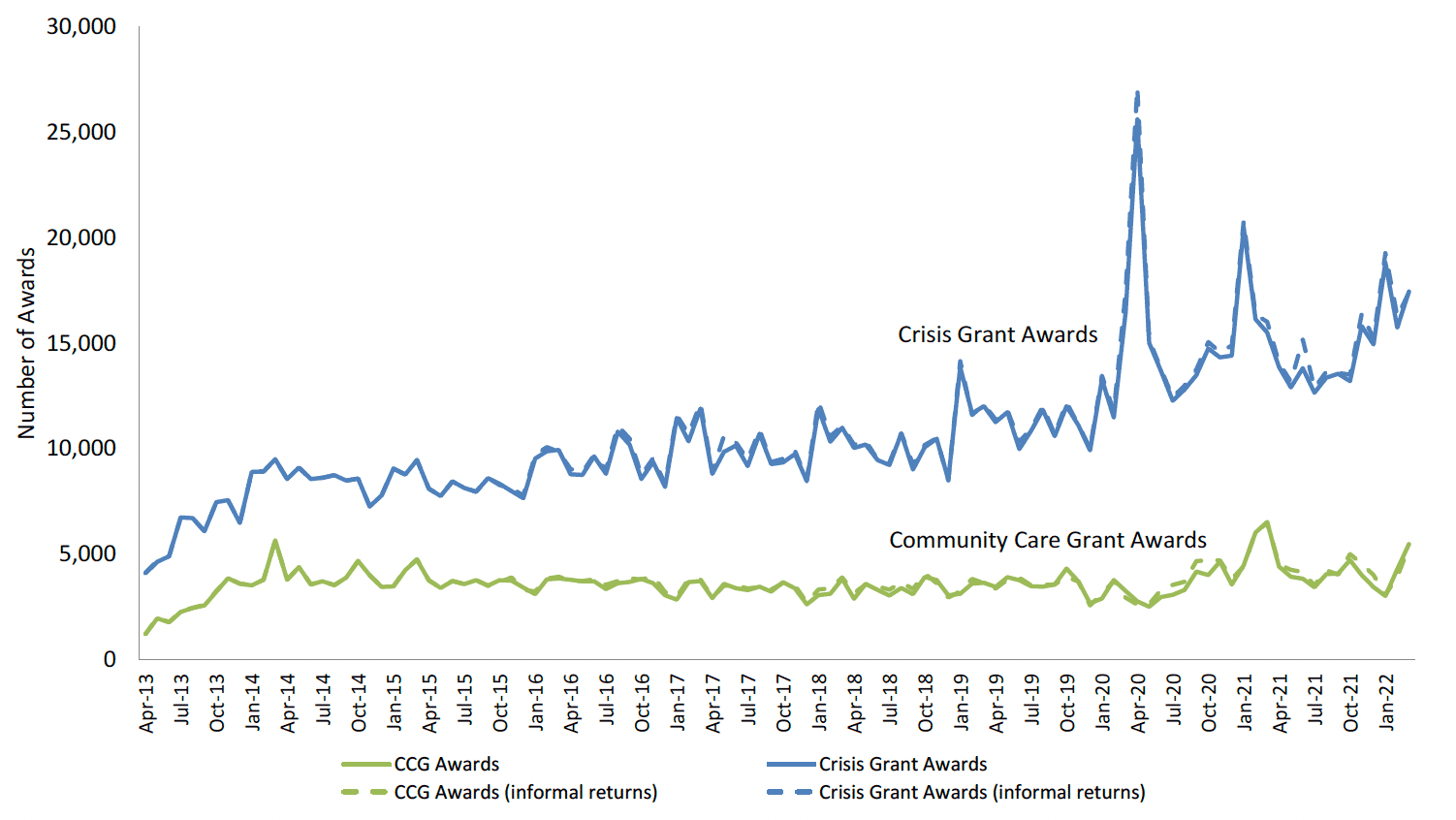Scottish Welfare Fund Statistics: Annual Update: 2021-22
The Scottish Welfare Fund comprises Community Care Grants – which help people to live independently – and Crisis Grants, which provide a safety net in a disaster or emergency.
This publication provides information on the SWF for 2021/22, and since 2013 when the scheme began.
Decisions and awards
Decisions were made on 87,900 Community Care Grant applications in 2021-22 and 48,095 awards were made, representing an acceptance rate of 55% (Table 19), one percentage point lower than 2020-21 (Table 23). At the same time, decisions were made on 268,265 Crisis Grant applications in 2021-22 and 176,880 awards were made with an acceptance rate of 66% (Table 24), three percentage points lower than 2020-21. (Table 28).
The highest Community Care Grant acceptance rate was in Inverclyde (81%), and the lowest was in Fife (32%). Compared to 2020-21, acceptance rates increased in 16 local authorities and decreased in 16 local authorities (Table 23). The highest Crisis Grant acceptance rate was in Angus (88%) and the lowest was in Orkney (42%). Compared to 2020-21, acceptance rates increased in 11 local authorities and decreased in 21 local authorities (Table 28).
There were variations in Community Care Grant and Crisis Grant acceptance rates during the year, which may have been due to COVID-19 (Table 22, Table 27, Chart 6). However, the changes at a Scotland level have been less, and more variation has been seen between local authorities, where at times the effect of the pandemic has been to greatly increase the numbers of applications for Self-isolation Support Grants, which has impacted on the ability of authorities to deal with SWF applications.

The number of Community Care Grants awarded in 2021-22 (48,780 awards) was 1% higher (690 awards) than in 2020-21, and the number of Crisis Grants awarded in 2021 (176,880 awards) was 6% lower (11,590 awards) than in 2020-21 (Table 21, Table 26).
During the year, there were sharp increases in Crisis Grant awards in April 2020, January 2021 and in late 2021 and early 2022 (Chart 7). In April 2020, there 25,600 awards, 128% more than April 2019, and in January 2021 there were 20,490 awards, 54% more than January 2020. The later peaks saw, for example, 15,805 awards in November 2021 (+10% compared to November 2020), and 17,440 in March 2022 (+13% vs March 2021). These peaks in Crisis Grant awards were likely due to the impacts of COVID-19, although the general number of awards shows little sign of falling back to numbers last seen in 2019.
The number of Community Care Grant awards has continued to show greater variability during the pandemic. Peaks in numbers of awards were seen in October 2021 and March 2022, and these were to an extent indicative of the clearance of backlogs which built up during for example during January 2022 rather than an actual increase in activity.

At local authority level, the greatest increase in Community Care Grant awards compared to 2020-21 was in Na-h Eileanan Siar (42% increase) (Table 21). The greatest decrease was in West Dunbartonshire (-31%). The greatest increase in Crisis Grant awards was in Highland (47% increase), reflecting a 53% increase in applications (Table 26, Table 6). The greatest decrease was in Orkney (-42%), although this was a decrease of only 40 awards.
In 2021-22, the most common reason for Community Care Grant application rejections remained 'Reasons for application do not meet the conditions for an award' (56%), and the most common reason for Crisis Grant application rejections remained 'Excluded as a result of previous application history' (33%) (Table 30).
Contact
Email: SocialSecurityStats@gov.scot
There is a problem
Thanks for your feedback